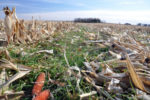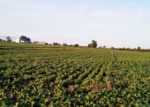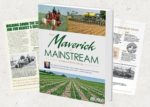Advertise Follow Us
No-Till Farming 101
Piecing Together a No-Till System from the Ground Up
A family that ignored naysayers and embraced no-till practices and living roots is bringing productivity back to tough clay soils and riverbottoms in southern Indiana.
Read More
Best Practices for Avoiding Compaction at Harvest
Ag engineer Paul Jasa shares some actionable information about avoiding compaction issues this fall during harvest to pave the way for planting next spring.
Read More
How to Change with the Climate to Maintain No-Till Yields, Productivity
More erratic precipitation patterns and shifting seasons are reinforcing the value of a comprehensive no-till plan for improving soil health.
Read More









